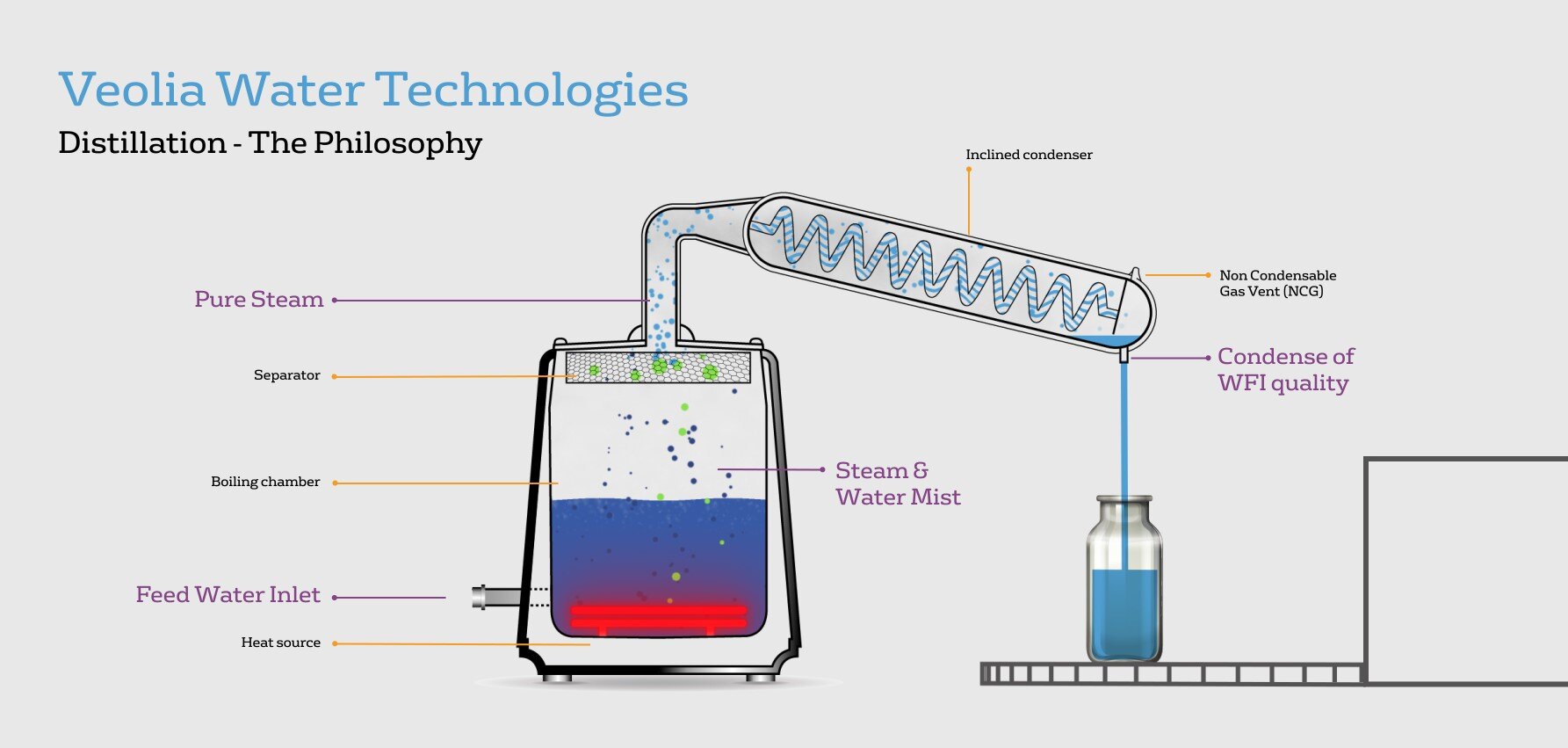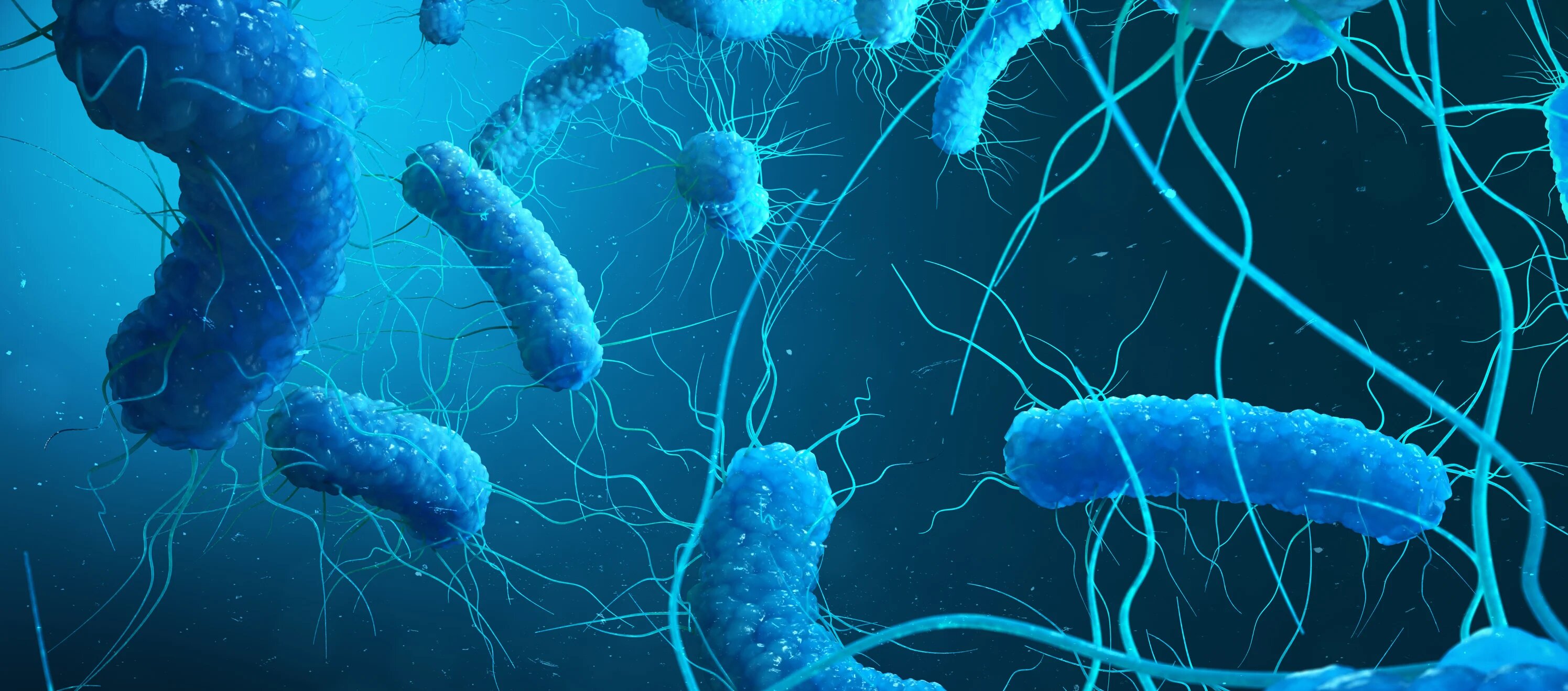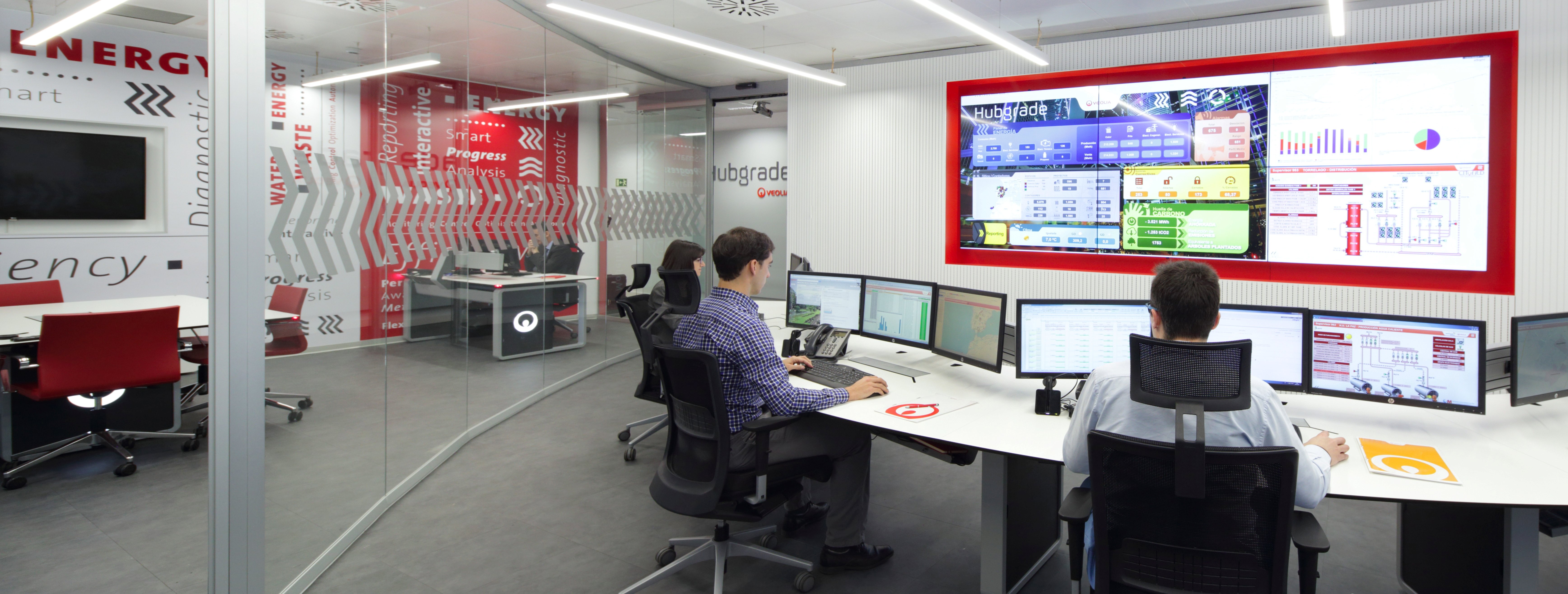As the purest grade of bulk pharmaceutical water, Water for Injection (WFI) must meet the highest levels of quality. Therefore, it is essential that the water treatment solution used reliably achieves this standard while meeting the other requirements of the business. Here we outline some of the key benefits of using distillation to produce hot WFI.
Since April 2017, following a change to the European Pharmacopoeia (Ph. Eur) standards, biopharmaceutical businesses have had the choice of either distillation (hot WFI) or reverse osmosis (RO) based membrane processes (cold WFI) when producing water for injection.
As both approaches will produce fully compliant WFI, the choice of system will often depend on factors such as the current systems in place, the experience of the team with the technologies in question and physical space constraints.
The key benefits of distillation include:
Tried and trusted technology

Due to the vulnerability of WFI to contamination and the risk this poses, many businesses will find peace of mind in technologies that have been used for decades for the purpose, like distillation. A distiller turns water into steam, in which bacteria and endotoxins cannot exist, and leaves behind other contaminants and impurities, before it is recondensed as a highly purified water. The main concern is that water droplets are completely separated from the steam, as this can carry contamination. However, a well-designed system, supplied by an experienced and reputable technology provider, will have measures in place to prevent this.
Minimised contamination risk

In contrast to cold WFI systems, there is no risk of bio-films forming within distillation systems. Once established, bio-films can be difficult to remove and can protect microorganisms from disinfection chemicals, leading to increased endotoxin levels in the system. While modern RO systems mitigate this risk with regular heat sanitisation, distillation avoids this issue entirely. In addition, for many organisations, the heat utilised in the distillation process is also intuitively reassuring compared with cold WFI that is produced at room temperature.
Less onerous monitoring

All WFI systems require robust monitoring to ensure the necessary level of quality is maintained. However, the minimised contamination risk with distillation means the additional testing and monitoring required with cold WFI is not necessary.
This process can be made simpler still by selecting a solution that supports remote monitoring capabilities. As an example, our Hubgrade digital services platform allows easy monitoring from any connected device as well as enabling analysis and optimisation of system performance.
Ideal for hot storage
Many businesses choose to store and distribute water at a higher temperature, generally above 80°C, meaning that the WFI needs to be heated following purification. In these situations, hot WFI may be preferred as, depending on the solution, the WFI can be produced at the required temperature. In contrast, WFI produced by membrane processes will need to be heated to reach the target temperature. However, this is often a matter of preference for the company as energy will be required to heat the water, within the distiller.
Introducing Polaris™ 2.0 MED

Multiple Effect Distillers (MED) comprise a series of columns, with the water in the first heated by an external source. The subsequent columns use the energy from the steam in the previous column to heat the water. This is generally seen as a simple distillation option as there are few mechanical parts, meaning minimised maintenance requirements and costs.
Not all MED systems are the same, so it is important to look carefully at the performance of a proposed solution. Our Polaris™ 2.0 MED systems for WFI are designed in accordance with GAMP, cGMP, ISPE and FDA guidelines and meet the product quality specifications of all major pharmacopoeia.
Polaris™ 2.0 MED is available in a range of standard units that can deliver between 250 and 4500 l/hr of WFI from a purified water feed and can be supplied with between 3 and 8 columns. This latest generation of the tried and trusted Polaris technology is engineered to provide energy and water savings while maintaining system responsiveness. By utilising a falling film distillation process, Polaris™ 2.0 MED delivers high levels of efficiency and a fast start-up. It also has a blowdown rate of just 10% to minimise water consumption.
In addition to the standard options designed to meet a wide range of customer requirements, Polaris™ 2.0 MED also has a variety of optional features, including a feed water tank, electropolishing of WFI outlet line, programmable sanitisation and coolers for the blowdown and WFI sample point.
All Polaris™ 2.0 solutions are backed by our expert technical support and comprehensive service and maintenance contract options for peace of mind and maximised uptime.
Distillation systems are a tried and trusted method for producing WFI with minimal risk of contamination. To find out more about our range of hot and cold WFI solutions visit our pharmaceutical water page.